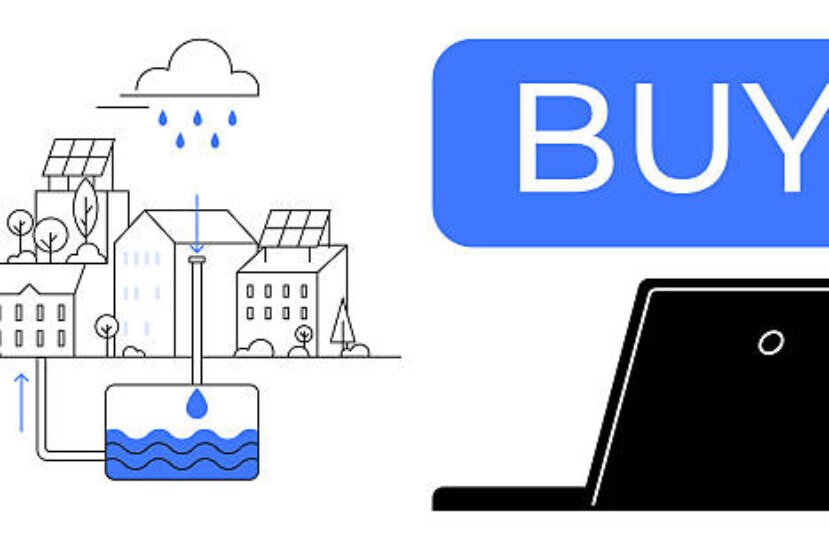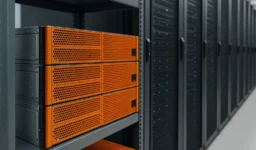Technology drives our modern world, but its rapid advancement has come at a cost to our planet. From the mounting e-waste crisis to the massive energy consumption of data centers, the environmental footprint of our digital lives is a growing concern. The call for a more sustainable approach to innovation has never been louder. This is where Aurö comes in—a comprehensive framework designed to harmonize technological progress with environmental responsibility.
Aurö provides a roadmap for businesses, innovators, and consumers to create and use technology in a way that respects planetary boundaries. It’s a structured approach to integrating sustainability into every stage of the tech lifecycle, from design and production to use and disposal. This guide will explore the core principles of the Aurö framework, its tangible benefits, and how you can get involved in building a future where technology and nature can thrive together.
What are the core principles of Aurö?
At its heart, the Aurö framework is built on three foundational principles that guide the development and deployment of sustainable technology. These principles are not just abstract ideals; they are actionable pillars designed to foster a culture of Green IT and responsible innovation across the industry.
1. Resource Efficiency
Resource efficiency is about doing more with less. This principle challenges the tech industry to minimize its consumption of raw materials, water, and energy throughout a product’s lifecycle. It encourages designing products that are durable, repairable, and ultimately recyclable, moving away from the “take-make-dispose” model.
A prime example of this principle in action is Patagonia. While not a traditional tech company, its commitment to product durability and its “Worn Wear” program, which encourages repairing and reusing gear, embodies the spirit of resource efficiency. Applying this to tech means creating devices that last longer and can be easily upgraded or recycled, reducing the demand for virgin resources and curbing the tide of electronic waste.
2. Renewable Energy Usage
The digital economy runs on electricity, and much of that power still comes from fossil fuels. The second principle of Aurö is a commitment to transitioning the tech sector to 100% renewable energy. This involves powering data centers, manufacturing facilities, and corporate offices with clean sources like solar, wind, and geothermal energy.
Google is a leader in this domain, having achieved 100% renewable energy matching for its global operations since 2017. The company invests heavily in large-scale solar and wind projects to power its data centers, demonstrating that even the most energy-intensive tech operations can be powered sustainably. This principle is central to Green Computing, as it directly tackles the carbon footprint of digital infrastructure.
3. Responsible Innovation
Responsible innovation is about considering the full lifecycle impact of a product from the moment of its conception. This means designing for longevity, repairability, and ethical sourcing of materials. It also involves being transparent with consumers about a product’s environmental and social footprint.
Fairphone is a standout example of responsible innovation. The company designs modular smartphones that are easy to repair, allowing users to replace individual components like the battery or camera instead of the entire device. Fairphone is also committed to sourcing conflict-free minerals and ensuring fair labor practices in its supply chain. This approach directly counters the planned obsolescence that drives so much e-waste, making it a benchmark for eco-friendly tech. Tesla also exemplifies this through its focus on electric vehicles and energy storage solutions, pushing the boundaries of renewable energy innovation.
What are the benefits of implementing Aurö?
Adopting the Aurö framework isn’t just an act of environmental goodwill; it’s a strategic business decision that delivers tangible benefits for organizations of all sizes. By aligning with the principles of sustainable technology, companies can unlock new opportunities for growth, resilience, and market leadership.
Reduced Environmental Impact
The most direct benefit is a significant reduction in a company’s environmental footprint. By optimizing resource use, switching to renewable energy, and designing for circularity, businesses can dramatically lower their carbon emissions, water consumption, and waste generation. This is a critical step in contributing to global climate goals and preserving natural ecosystems for future generations.
Enhanced Brand Reputation
Modern consumers are increasingly conscious of the environmental impact of their purchases. A demonstrated commitment to sustainability can be a powerful differentiator in a crowded market. Companies that embrace the Aurö framework can build a strong, positive brand image, attracting loyal customers, talented employees, and ESG-focused (Environmental, Social, and Governance) investors. Interface, a modular carpet tile manufacturer, transformed its brand by committing to sustainability, ultimately achieving carbon neutrality across its product lifecycle and winning over environmentally-conscious clients.
Long-Term Cost Savings
Sustainability and profitability are not mutually exclusive. In fact, they often go hand-in-hand. Resource efficiency measures, such as reducing energy consumption and minimizing waste, lead to lower operational costs. Designing durable, repairable products can also reduce warranty claims and returns. While there may be upfront investments, the long-term savings from implementing Green IT practices are substantial.
Collaboration and Innovation
The challenges of creating a sustainable tech industry are too large for any single company to solve alone. The Aurö framework fosters a spirit of collaboration, encouraging businesses to share best practices, partner on research, and work together to solve common problems like e-waste recycling. This collaborative environment often sparks innovation, leading to the development of new eco-friendly technologies, materials, and business models that drive the entire industry forward.
How can I get started with Aurö?
Adopting the Aurö framework is a journey that can be undertaken by individuals, businesses, and entire organizations. Here are some actionable steps to begin integrating its principles into your own practices.
For Individuals and Consumers
- Vote with Your Wallet: Support companies that are transparent about their supply chains and environmental impact. Choose products designed for longevity and repairability, like those from Fairphone or Patagonia.
- Extend the Life of Your Devices: Repair your electronics instead of replacing them. When it’s time to upgrade, responsibly recycle your old devices through certified e-waste programs.
- Reduce Your Digital Carbon Footprint: Adjust your device settings to save energy, unsubscribe from unwanted emails to reduce data storage, and consider the energy consumption of services you use.
For Businesses and Organizations
- Conduct a Sustainability Audit: Begin by assessing your current environmental impact. Measure your energy consumption, waste generation, and supply chain footprint to identify key areas for improvement.
- Set Clear, Measurable Goals: Establish specific targets based on the Aurö principles. For example, aim to power your operations with 50% renewable energy within five years or reduce packaging waste by 30%.
- Empower Your Team: Foster a culture of sustainability within your organization. Create a “green team” to lead initiatives, provide training on sustainable practices, and encourage employees to contribute ideas.
- Collaborate and Share: Connect with other organizations in your industry to share challenges and successes. Join alliances and initiatives focused on sustainable technology to amplify your impact.
What is the future of Aurö?
The principles behind Aurö are not static; they are designed to evolve alongside technology and our understanding of sustainability. The future of the framework will likely see the development of more standardized metrics, certifications, and tools to help organizations measure and report their progress. As AI and machine learning become more advanced, they can be leveraged to further optimize supply chains, predict resource needs, and design even more efficient systems.
Aurö is poised to become an industry standard, shaping policy, influencing consumer behavior, and driving investment toward companies that prioritize the planet. Its potential extends beyond just mitigating harm; it can be a catalyst for a new wave of innovation that is regenerative by design, creating technologies that actively contribute to environmental restoration. The continued adoption of Aurö will be instrumental in shaping a tech industry that is not only powerful and profitable but also a force for good in the world.
Frequently Asked Questions (FAQs)
What is the Aurö framework, and how does it promote sustainability in technology?
Aurö is a framework based on three core principles—Resource Efficiency, Renewable Energy Usage, and Responsible Innovation—that guide tech companies in reducing their environmental footprint throughout a product’s entire lifecycle.
How does implementing Aurö benefit my organization in terms of cost savings and brand reputation?
Implementing Aurö can lead to significant long-term cost savings by reducing energy and material consumption. It also enhances brand reputation by attracting environmentally-conscious customers, employees, and investors.
How can Aurö enhance innovation while promoting environmental responsibility?
The constraints of sustainability often drive creativity. Aurö encourages engineers and designers to find novel solutions for material use, energy efficiency, and product longevity, fostering a culture of purpose-driven innovation.
Can Aurö be applied to both hardware and software development?
Yes. For hardware, it means designing durable, repairable, and recyclable products. For software, it involves writing efficient code that minimizes energy consumption on servers and user devices, a key aspect of Green Computing.
What role does renewable energy play in the Aurö framework?
It plays a central role. Transitioning to 100% renewable energy for data centers, manufacturing, and operations is a core principle for decarbonizing the tech industry’s significant energy consumption.
How can my company collaborate with others to promote Aurö’s principles?
Companies can join industry alliances, participate in cross-sector partnerships, and share non-proprietary data on sustainability best practices to collectively advance the adoption of Aurö’s principles.
Charting a Sustainable Course
The Aurö framework offers more than just a set of guidelines; it presents a clear and compelling vision for the future of technology. It demonstrates that innovation and environmental stewardship are not conflicting goals but rather two sides of the same coin. By embracing resource efficiency, renewable energy, and responsible innovation, we can build a tech industry that drives progress while protecting our planet.
The journey toward a sustainable future requires collective action. Whether you are a consumer making a conscious purchase, an engineer designing a new product, or a business leader setting a new corporate strategy, you have a role to play. The principles of Aurö provide the compass we need to navigate the complexities of the digital age and build a world where technology works in harmony with nature.




Leave a comment